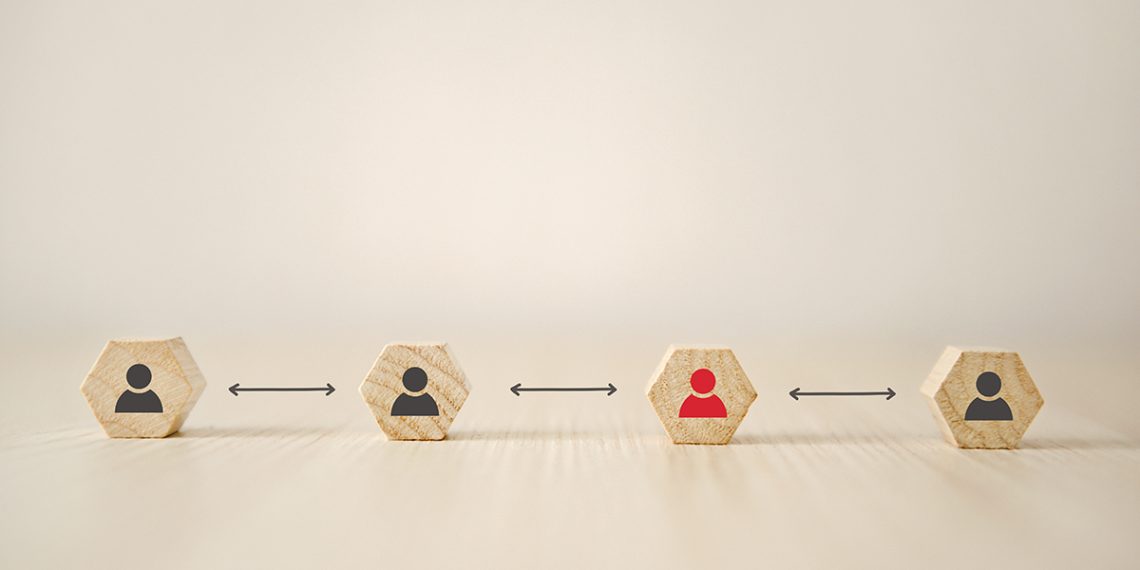Most successful businesses are customer-centric, right? However, customer satisfaction directly correlates with how employees within a company are treated.
Do your employees feel taken care of? Are you making attempts to track their journey within your organization?
These are critical questions that need to be answered if you wish to define, track, and improve employee journeys with a view to reinforcing company culture.
In this post, we will explore what it is you need to know about employee journey mapping. What is an employee journey map? What are the benefits? The key stages and how do we create an employee journey map?
Let’s take a closer look!
Collect feedback with JustFeedback
JustFeedback helps your business increase profits and reduce risk by improving your customer experience
What is the employee journey?
An employee experience journey is essentially the journey employees embark on as soon as they connect with a company.
This journey starts out when an applicant first comes across a job vacancy within your company and ends when that same employee decides to leave your organization.
Employees are at the very heart of your organization. It is crucial that you make their experience with you worthwhile.
You will have to see to it that every action your employees take along the employee journey helps build a better employee experience. How can this be achieved? This is where employee journey mapping comes into play.
Let’s take a deeper dive and leave no stone unturned on this!
What is employee journey mapping?
Employee journey mapping is essentially a process through which organizations can visually represent the employee journey, as an employee moves through several stages, which we’ll look at in detail in this post.
With the help of employee journey mapping, organizations should find it easier to prioritize resources and identify key positions and / or critical moments throughout the employee journey.
This not only helps better align an organization, but also boosts employee experience, increases employee satisfaction, and creates a positive employee-centric culture.
The employee journey map is an impressive tool should you wish to visually map the emotions and thoughts employees might experience when they are within an organization.

Benefits of employee journey map
How does an employee journey map help organizations exactly? Here are some key benefits of creating an employee journey map —
1. Optimizing for uncertainty
Companies need to establish the key pain points and concerns regarding their employees.
An employee journey map helps to identify any employee pain points and areas that might cause some form of future stress.
With a map, companies can easily address these and uplift the employee experience. This is the ideal way to have a holistic view of the employee experience within an organization.
2. Know what works
Before deciding what doesn’t work in an employee experience journey, you should focus on things that do.
Identify the areas and touchpoints that function correctly and make plans to improve on them.
This process will help identify the “moments that matter” and give you clarity over what things don’t work and why they aren’t functioning as required.
3. Makes employee experience better
The end goal here is to boost employee experience. But wanting it to happen doesn’t make it happen. An employee journey map will lay down the foundation of an impeccable employee experience.
What we mean by this is that the employee journey map allows you to craft a plan of action in terms of setting your goals.
By keeping the employee journey map at the center of your approach, you will find it easier to achieve an overall improvement in the employee journey.
4. Boosts inclusion
This is a major concern that should be highlighted in all organizations. Your employees are smart, aren’t they? This means they can easily figure out any disparities in employee experiences.
Therefore, organizations should aim to eliminate inequity if they’re looking to boost company-wide inclusion. This is only possible if you put this concern in the employee journey map and work towards improving it.
5. Better employee retention
Companies want their employees to stay with them long term. This is because organizations invest money in training employees and making them a crucial part of the team.
Therefore, companies need to do what they can to boost employee retention, which can be achieved using employee journey mapping. The more comprehensive the employee journey map, the higher the employee retention.

Key stages of employee journey maps
Employees move through several stages in their journey within an organization. This is known as the “employee lifecycle”.
Here are some of the key stages of an average employee experience journey —
1. Sourcing and recruiting
The very first stage is recruitment. This is where applicants first come into contact with your organization. This is what we often refer to as the hiring process.
You will ask applicants to submit their resumes and other information to make it easier for you to shortlist candidates.
At the same time, you should make sure applicants find it convenient to apply to your organization. You must also improve your interview process. First impressions count!
2. Pre-onboarding
The next stage is pre-boarding where a candidate has accepted the job offer and is now ready to join the organization. How do you approach pre-boarding?
Well, you can send them emails or share information related to their joining on a phone call. The idea is to engage the new hires and make their onboarding experience worthwhile.
3. Onboarding and training
The next stage is the process of onboarding. This is where you will have to ensure employees know what they have to do once they start with your organization.
The employees should fully understand what they have to do and who they have to report to on their first day.
More importantly, they should have knowledge of the training process and how they are expected to be a part of it. The more clarity newcomers have, the better.
4. Compensation and benefits
Employees might have several questions about the benefits your organization has to offer. They will need to know everything there is to know about their compensation plan and various allowances.
The best way to ensure this is by building a company intranet that can host all compensation and benefit-related information. This will help make this process easier and more engaging.
5. Ongoing learning and development
Do you want your employees to become a major advantage over your competitors? You can achieve that by investing heavily in their ongoing learning and development.
Many of your competitors might be struggling to consistently foster employee learning and development.
You can dominate the market by ensuring your employees push toward advanced learning and development. A lack of growth in an organization could force employees to look elsewhere.
6. Ongoing engagement and communication
So, your employees are settling into your company. What’s your next step? The short answer is that they need to be taken care of.
This can be ensured by keeping all employees engaged and connected with business operations.
You can boost productivity by keeping employees updated with any company news and policies. Not only this, but you should aim to make them a part of all business-critical decisions.
7. Rewards and recognition
How do you plan on compensating your employees for their accomplishments and hard work? What are you going to do to make them feel appreciated?
You should have the answers to these important questions i.e., a plan to recognize and reward exceptional performances at work.
The more appreciated employees feel, the higher your employee retention. It’s time to get creative with your approach.
8. Performance planning, feedback, review
Companies that are performance-oriented make sure they conduct regular performance reviews with their employees.
They also conduct employee surveys to uncover any potential obstacles or threats to employee performance.
You should aim at improving the employee journey map with the help of solicited feedback. This will give the employee journey map added depth.
9. Pushing toward advancement
Every company has a hierarchy of accountability, which employees have to adhere to. It’s this hierarchy that they will have to approach when hoping to move up the career ladder.
As a company, you should prioritize keeping employees motivated and engaged throughout their growth within the organization. To do this successfully, make sure all employees are aware of the KPIs and benchmarks related to their role.
10. Retirement, termination, resignation
The last stage of the employee journey in an organization is retirement, termination, or resignation. These constitute the end of the employee experience journey.
As an organization, you will have to establish how this might impact other members of the team and ensure effective knowledge transfer.
How to create an employee journey map?
What does it take to build an effective employee journey map? Here are some of the steps you need to incorporate if you’re hoping to successfully create an employee journey map —
1. Conduct extensive research
Just like with the customer journey mapping, the employee journey map must be founded on reliable information.
This is why we highly recommend you conduct extensive market research. Begin with employee experience research across your industry. You can look for employee data such as turnover rates, tenure, and attrition.
Gather all necessary information to gain a full understanding of any problems and expectations in the market.
2. Develop key employee personas
Employee personas are fictional representations of a particular segment in any workforce. You will have to make sure you have an awareness of all problems and expectations of each employee persona. Identify these personas and develop a profile for each of them.
3. Create multiple maps
Companies that create employee journey maps for just one employee persona often alienate other personas that might be a part of the organization.
This is why we highly recommend you consider developing multiple employee journey maps so that you can see which map is most frequently used.
4. Identify key moments
You will have to define all the stages of the employee journey at your organization and identify the key moments in each of them. We have already discussed the different stages of the employee journey.
Go ahead and brainstorm or solicit employee feedback to identify “moments that matter” in each of these stages.
5. Set measurable KPIs
How are you going to measure the performance of your employee journey map? One of the best ways to do this is by defining the measurement: i.e., KPIs and initiatives for each defined stage.
You will have to set any goals and objectives of the employee journey map and work out if it performs as required.
6. Monitor and measure
Lastly, you will have to continue to monitor the employee journey map to look for areas to improve. We highly recommend you regularly update your employee journey map to make sure you build a highly engaging and connected workforce for your organization.
How do we measure employee journey effectiveness?
You now know everything there is to know about creating employee journey maps, right? But, are you using your knowledge properly when it comes to measuring employee journey effectiveness?
You will need to employ several further methods to ensure your employee journey maps are stronger.
We highly recommend you go ahead and conduct employee engagement surveys. You can start by sending out simple surveys and emails to attempt to gain a fuller understanding of the average employee sentiment across your organization.
These emails and surveys might help you uncover crucial employee journey information at critical moments. This will occur once you solicit the quantitative data, map it with the set KPIs, and use the information to improve the employee journey.
Final thoughts
Identifying and working toward improving key touchpoints in an employee journey map is an imperative that an organization cannot ignore.
It is essential that you identify areas in the map that can be worked upon in order to make employee journeys as smooth as possible.
We highly recommend implementing the steps discussed above to create an effective employee journey map while putting the best practices into action.
At the same time, you must acknowledge the fact that employee journey mapping is a work in progress that will eventually lead to improved employee engagement and productivity.
Did you find this post helpful? Stay tuned for more informative posts in the future.

